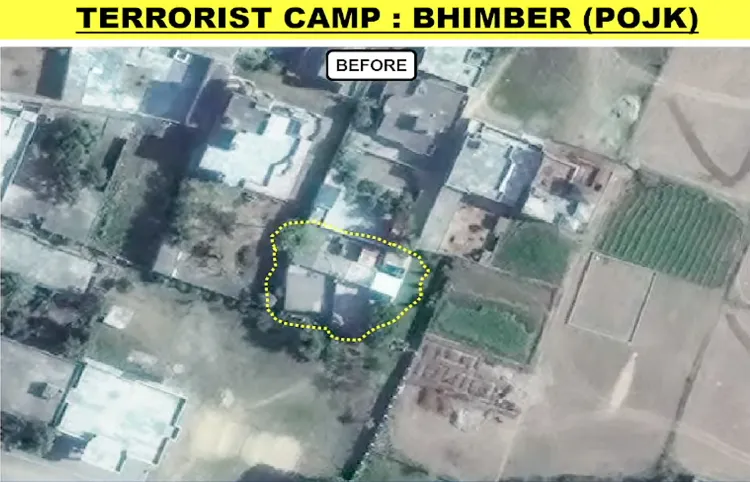Has the IAF Successfully Executed Its Tasks in Operation Sindoor?

Synopsis
Key Takeaways
- IAF executed tasks with precision.
- Operation Sindoor is ongoing.
- Pakistan's airbases targeted to neutralize threats.
- National objectives guided operations.
- Call for restraint against speculation.
New Delhi, May 11 (NationPress) The Indian Air Force (IAF) announced on Sunday that it has executed its designated tasks with precision and professionalism during Operation Sindoor, which is still in progress.
In a message posted on X, the IAF indicated that the military operations were aligned with national objectives and urged everyone to avoid speculation and the spread of unverified information.
On Saturday, the government indicated that India had reached a mutual understanding regarding a ceasefire and halted military actions. Just hours after this understanding with Pakistan, drones from Pakistan were detected and intercepted across various locations. India asserted that Pakistan breached the ceasefire and emphasized that the armed forces were providing an appropriate and adequate response.
During a late-night briefing, Foreign Secretary Vikram Misri stated that the armed forces remain vigilant and have been instructed to respond decisively to any future violations of the border along the International Border and the Line of Control (LoC).
The IAF reiterated on Sunday via its X post, “The Indian Air Force (IAF) has executed its assigned tasks in Operation Sindoor with precision and professionalism. The operations were carried out in a deliberate and discreet manner, in line with National Objectives. As the operations are ongoing, a detailed briefing will follow in due time. The IAF urges all to avoid speculation and the dissemination of unverified information.”
In collaboration with the Army and Navy, the IAF successfully completed a mission targeting and destroying nine terror bases located in Pakistan and Pakistan-occupied Kashmir on May 7.
In response to this success, Pakistan attempted to target military installations and civilian areas within India. All these attempts were thwarted, and the Indian Armed Forces retaliated accordingly.
Government media briefings have indicated that several airbases in Pakistan were destroyed as part of precise retaliatory measures, ensuring minimal civilian impact.
While the Air Force has not disclosed specific details regarding the series of attacks conducted in recent days following Pakistan’s drone and missile incidents, BJP leader Amit Malviya has shared information about the locations targeted.
Malviya provided a list of bases struck during Operation Sindoor, along with a map highlighting these locations.
1. Nur Khan/Chaklala Airbase (Rawalpindi) -- India’s action at Nur Khan disrupted critical air logistics and military coordination for Pakistan. Being the closest base to Islamabad, often utilized for VIP transport, its neutralization severed vital links between the Pakistan Air Force (PAF) leadership and its operational units during the conflict.
2. PAF Base Rafiqui (Shorkot) -- Rafiqui, a key combat base housing frontline squadrons, was rendered inoperable. The destruction of its aircraft shelters and runway infrastructure significantly impaired Pakistan’s capability to conduct counter-air operations, especially in central Punjab.
3. Murid Airbase (Punjab) -- Targeting Murid disrupted a crucial training and potential missile storage hub, degrading Pakistan’s long-term air force readiness and eliminating a critical node in the pilot training pipeline.
4. Sukkur Airbase (Sindh) -- The destruction of Sukkur Airbase hampered Pakistan’s southern air corridor, vital for troop and equipment transit across Sindh and Balochistan.
5. Sialkot Airbase (Eastern Punjab) -- Neutralized early in the conflict, Sialkot served as a platform for sorties towards Jammu and Punjab.
6. Pasrur Airstrip (Punjab) -- Though smaller, Pasrur contributed to dispersal and emergency aircraft operations; its neutralization reduced tactical flexibility for Pakistan.
7. Chunian (Radar/Support Installation) -- Strikes on Chunian disrupted critical radar and communications infrastructure for airspace monitoring in central Punjab.
8. Sargodha Airbase (Mushaf Base) -- Its destruction was a significant blow, crippling Pakistan’s command-and-control structure.
9. Skardu Airbase (Gilgit-Baltistan) -- Neutralization of Skardu degraded Pakistan’s northern surveillance capabilities and disrupted logistical links.
10. Bholari Airbase (Near Karachi) -- As one of Pakistan’s newest airbases, its destruction compromised future southern force projection.
11. Jacobabad Airbase (Sindh-Balochistan) -- Jacobabad’s neutralization further isolated western Pakistan, cutting off critical mobility and surveillance.









